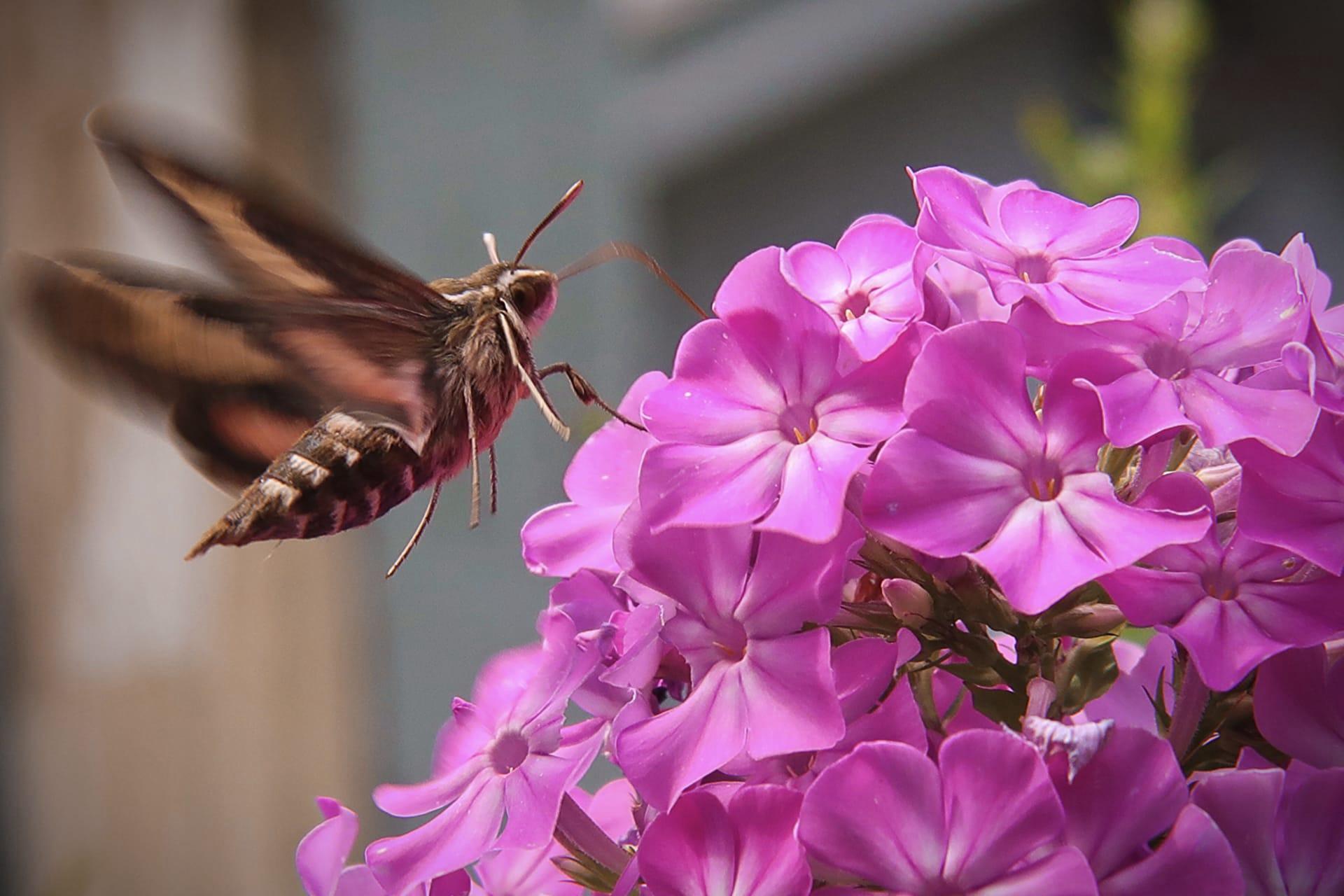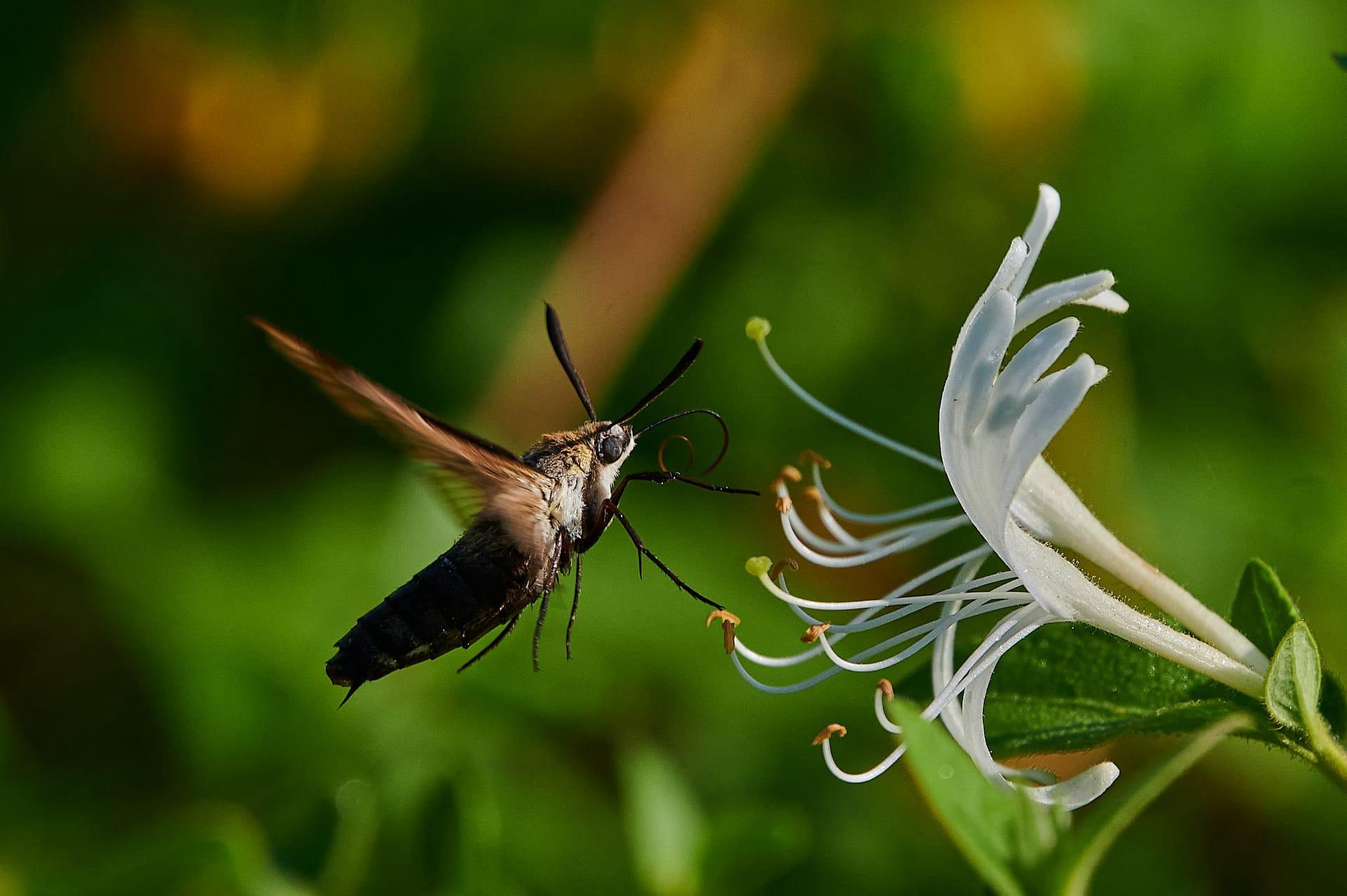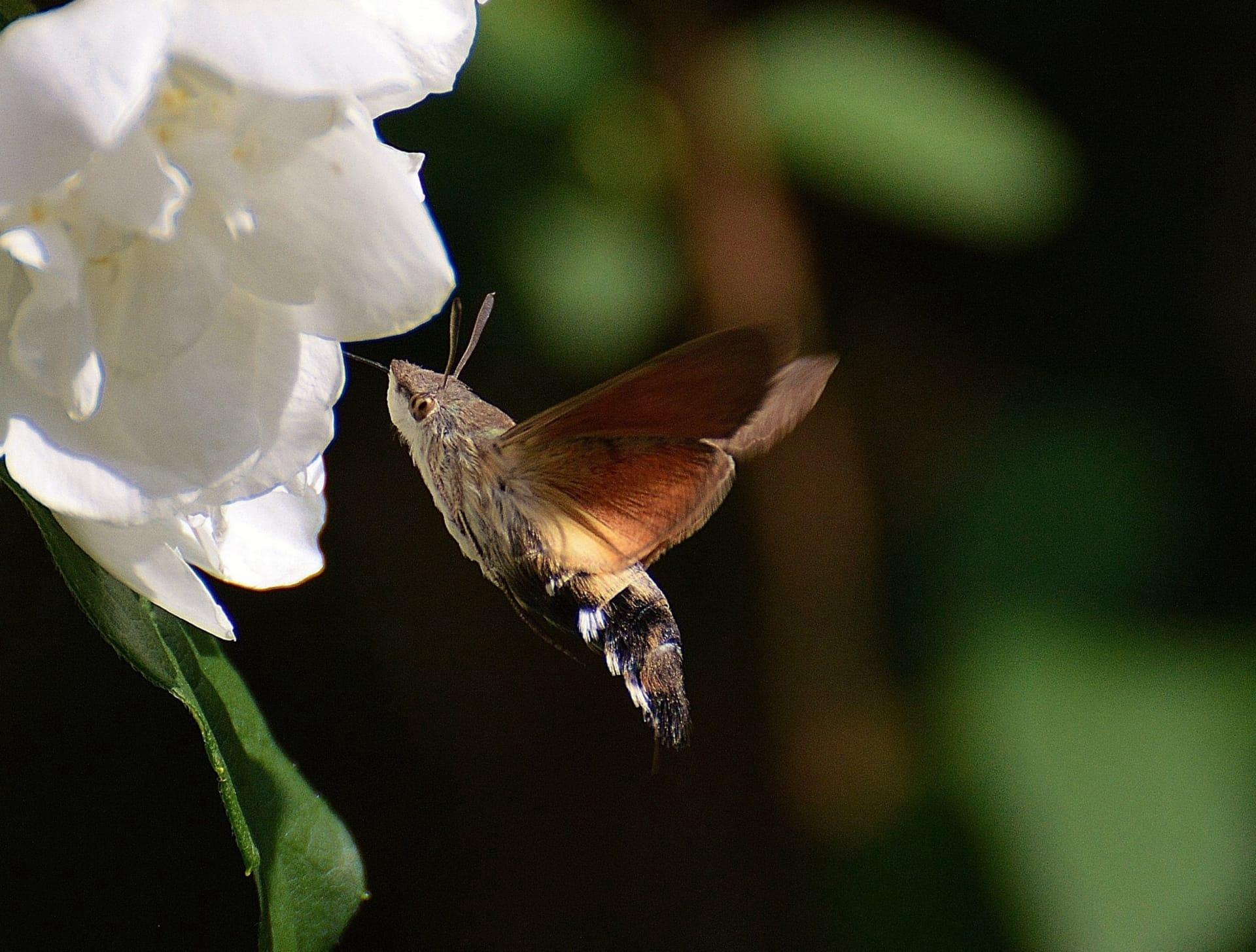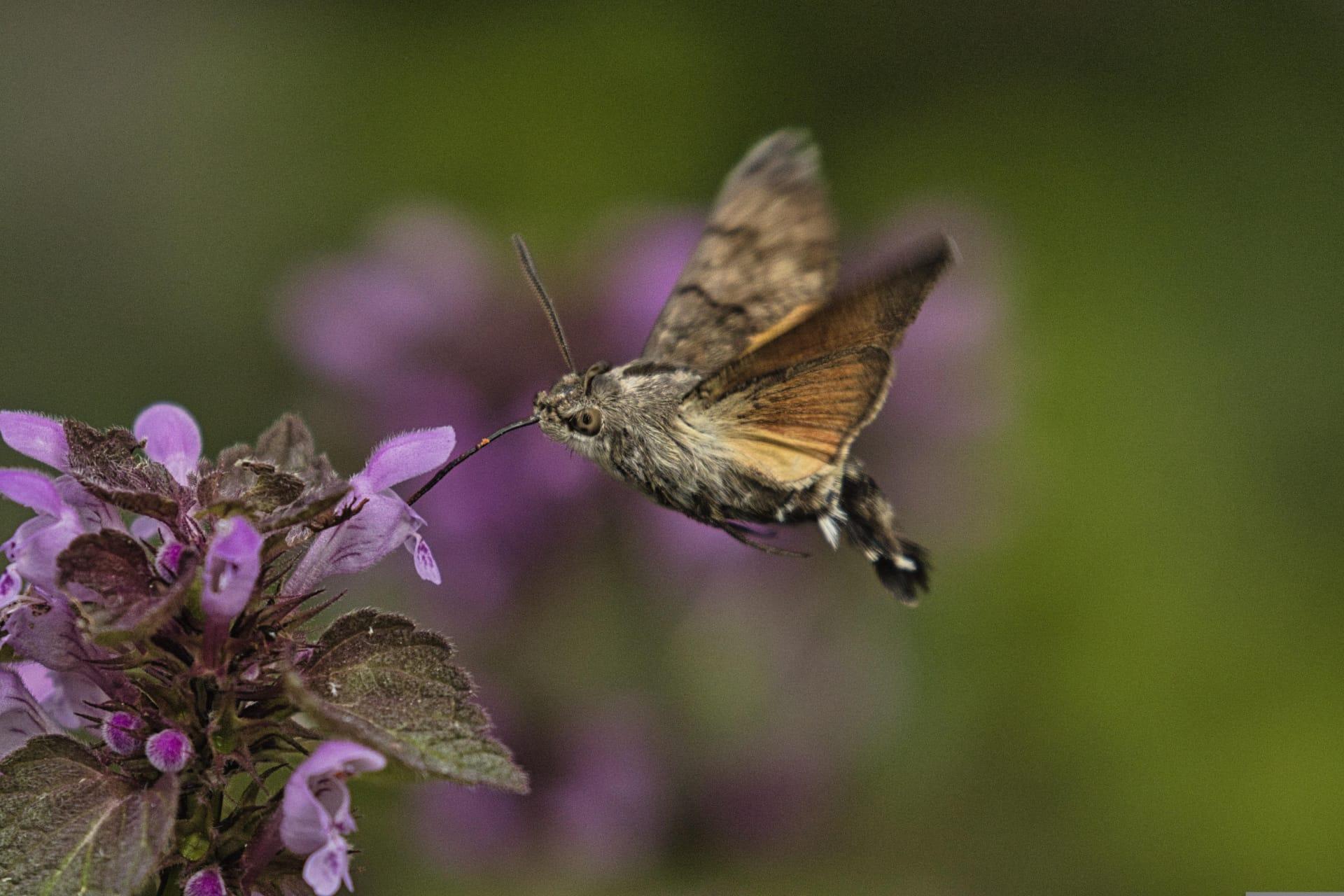Hummingbird Moth Trivia
- Home /
- Trivia Question /
- Animal /
- Hummingbird Moth Trivia
1
Question: What distinguishes the hummingbird moth's flight from other moths?
Answer: Unlike most moths, hummingbird moths hover in mid-air while feeding. They can fly backwards, change direction quickly, and maintain a steady position, much like hummingbirds. Their wing speed can reach up to 70 beats per second, and they can travel at speeds of 12 miles per hour.
Question: How does the appearance of the hummingbird moth help it in nature?
Answer: The hummingbird moth's resemblance to hummingbirds is a form of protective mimicry. Predators often mistake them for hummingbirds, which are less palatable and more agile, thus avoiding the moths. Their body is covered in furry scales, giving them a bird-like appearance, and their transparent wings span about 2 inches.

2
Question: Is it true that hummingbird moths are only active during the day?
Answer: Contrary to popular belief, hummingbird moths are not strictly diurnal. They are crepuscular, meaning they are most active during twilight hours, both at dawn and dusk. This behavior helps them avoid many daytime predators and intense competition for food.
Question: Do hummingbird moths produce the same humming sound as hummingbirds?
Answer: Despite their name, hummingbird moths don't actually produce a humming sound similar to hummingbirds. The sound they make is much softer, often imperceptible to the human ear. Their wings create a faint whisper due to their rapid movement, not a distinct hum.

3
Question: What is the lifespan of a hummingbird moth?
Answer: The lifespan of a hummingbird moth varies between species, but on average, they live for about a year. However, most of this time is spent as larvae. As adult moths, their lifespan is typically short, ranging from 2 to 5 weeks, during which they focus on feeding and reproduction.
Question: How do hummingbird moths contribute to the ecosystem?
Answer: Hummingbird moths play a crucial role in pollination. As they feed on nectar from flowers, they transfer pollen from one flower to another, aiding in the reproductive process of various plants. They are particularly attracted to flowers with bright colors and strong scents, like honeysuckle and lilacs.

4
Question: What do hummingbird moth caterpillars feed on?
Answer: Hummingbird moth caterpillars have a specific diet, mainly feeding on leaves of plants such as honeysuckle, hawthorn, and various members of the rose family. The caterpillars are green with small horn-like structures, helping them blend into their environment for protection.
Question: Can hummingbird moths see well?
Answer: Yes, hummingbird moths have excellent vision. Their large compound eyes are highly sensitive to light, allowing them to navigate and feed in low-light conditions. This vision, combined with their hovering flight, makes them proficient at locating and feeding on flowers after sunset.

5
Question: What are the breeding habits of hummingbird moths?
Answer: Hummingbird moths lay their eggs singly or in small groups on the underside of host plant leaves. After hatching, the caterpillars feed voraciously on the host plant, undergoing several molting stages before pupating. The adult moths emerge to continue the cycle.
Question: How do hummingbird moths survive cold weather?
Answer: In regions with cold winters, hummingbird moths survive as pupae buried in the soil or leaf litter. They enter a state of diapause, a form of hibernation, to endure the cold. With the arrival of warm weather, they complete their metamorphosis and emerge as adult moths.